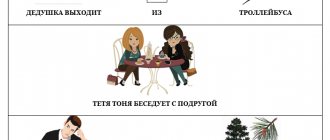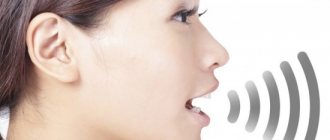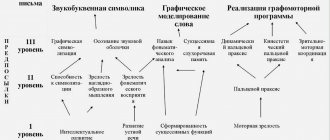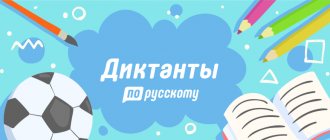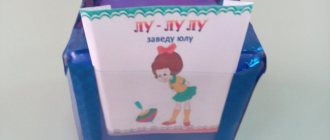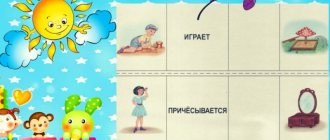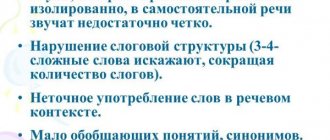Speech therapy massage of a child’s face is intended to activate the work of the facial nerves, improve blood circulation in the tissues, and stimulate the release of tension in the facial muscles. This is a useful, and in some cases necessary, method that has a positive effect on the growing organism. By influencing the muscular and nervous systems, it creates the prerequisites for the development of speech in children and corrects sound pronunciation. The technique is especially important for a child facing speech problems.
Indications for speech therapy massage
The speech therapist selects a type of massage aimed at activating inactive areas of the verbal apparatus. This allows you to gradually restore tone to all muscles responsible for speech function. The technique can be used for dysarthria, rhinolalia, dyslalia, and so on.
Manipulations can be carried out from two months, although at an early age they are done only for prevention. For serious disorders, massage is used to restore vocal capabilities, tone the muscles of the speech system and reduce the time it takes to develop pronunciation. The method can correct even significant neurological symptoms.
Impact on important speech centers - lips, tongue, earlobes and neck, is indicated for children with the following problems:
- partial loss or incomplete voice disorder;
- treat various defects;
- excessive intensity of the facial muscles;
- excessive reflexive drooling;
- failure of the pronunciation system of speech as a whole;
- cerebral palsy;
- violations of the formation of articulatory muscles;
- all types of speechopathy.
All these disorders can lead to serious speech impediments in the future, and to prevent this, measures must be taken as early as possible.
Speech therapy massage has contraindications. These include colds and respiratory pathologies, stomatitis, enlarged lymph nodes, inflammation of the mucous membranes of the eyes and gums, and herpes. With autism, cerebral palsy, seizures, and Down syndrome, special caution is needed.
Indications
Each type of massage has certain indications, which also depend on the age and individual characteristics of the child. In general, a doctor may prescribe a massage course for a child for the following indications:
- Muscle hypertonicity (diagnosed by a doctor);
- Poor posture;
- Unreasonable headaches in a child;
- Frequent illnesses;
- Signs of torticollis, dysplasia, clubfoot or flatfoot, as well as other pathologies of the musculoskeletal system.
Separately, it is worth mentioning such a diagnosis as cerebral palsy. In this condition, massage is extremely necessary for the child. After a course of massage, children feel better, this significantly affects motor skills, muscle functioning and the functioning of the central nervous system. Children with cerebral palsy are recommended to undergo massage courses several times a year.
Benefits and goals of speech therapy massage
The main goals of massage are as follows:
- achieving accurate articulation of sounds;
- improvement of the condition of the vocal cords;
- normalization of respiration during speech;
- prevention of psychological stress due to speech defects;
- general improvement in the quality of speech and the functioning of the speech apparatus.
Massage helps to normalize the muscle tone of the general, articulatory and facial muscles, reduces the manifestation of paralysis and paresis of these muscles, and reduces pathological movements of the speech muscles. Sometimes the procedure is performed to eliminate excessive salivation in children, which also interferes with normal diction.
Speech activation with massage
Speech is one of the most important indicators of the formation of human physiological health. When speech development lags, facial massage becomes a necessary remedy that affects the alignment of the tone of the facial muscles.
Speech therapy massage of a child’s face essentially consists of influencing the facial muscles, activating the work of blood vessels and facial nerves.
Massage is designed to perform the following functions:
- accelerate blood circulation and, as a result, improve skin nutrition, increase metabolic processes;
- improve the performance of facial muscles;
- develop coordination of movements of the organs of articulation by normalizing muscle tone;
- correct the pronunciation of sounds;
- reduce hypersalivation (increased secretion of the salivary glands);
- have a preventive effect and eliminate speech disorders (stuttering, voice disorders, muscle tone).
The psychological result of the method is the relief of emotional stress in children with speech defects. From the listed functions it follows that the method helps to maintain development, eliminate speech problems and has a beneficial effect on the general physiology of the baby.
Main types of massage
Speech therapy massage has several main types:
Classical. Involves the usual massage techniques: stroking, kneading, rubbing and vibration. Used to activate and stimulate muscle tone.
- Spot. It is aimed at biologically active points where blood vessels and nerve endings accumulate.
- Hardware. Vacuum or vibration devices are used.
There is probe massage and self-massage. The child does the last one himself, massaging his face and tongue.
Probe massage is performed according to the method of E.V. Novikova. It helps to normalize speech breathing, correct the pronunciation of sounds, increase vocal strength and further normalize the functioning of the nervous system. It is carried out by a specialist. The sequence of using different probes to the required areas is determined individually.
What to do if a child speaks poorly at 6 years old?
Typically, sessions are carried out over a course of 2-3 weeks. A repeat course is possible after 1.5-2 months. The technique is contraindicated for children under six months of age.
What techniques are used to provide speech therapy assistance?
Speech and speech therapists use a variety of techniques, including:
Language intervention activities: The specialist will interact with the child through play and conversation, using pictures, books, objects or games to stimulate language development. The speech therapist helps model correct vocabulary and grammar using repetition exercises to develop language skills.
Specifics of massage at home
When performing a massage at home, the child should be comfortable. He should not feel anxious; it is important to find an approach to him and distract him with something. Sessions are performed for small children while they are in a stroller or in their mother’s arms. Older children can sit on their back with a small pillow or bolster under their neck or in a chair with a headrest.
Over time, children get used to manipulations and perceive them calmly.
The procedure can be carried out no earlier than two hours after eating. First you need to rinse your child's mouth thoroughly.
Contraindications
Despite the fact that massage is extremely beneficial for the child’s body, this procedure has some contraindications:
- It is not recommended to massage children during colds, inflammatory and infectious processes, as well as when body temperature rises.
- The presence of dermatological diseases, when the skin is covered with rashes, ulcers, etc. This also includes diathesis and allergic rashes.
- Massage should be performed with extreme caution in the presence of an umbilical hernia. In this case, self-massage is strictly contraindicated.
Important! In case of any heart pathologies, massage can only be performed after consultation with a specialist. In this case, massage for a child may be contraindicated!
Pre-warm-up
You need to start the session with a general facial massage for a few minutes. You need to perform pleasant stroking and vibrating manipulations for the baby. Directions may be different:
- The forehead is massaged from bottom to top and from the center to the temples.
- The lower eyelid needs to be worked from the outer edge to the inner, the upper - vice versa.
- Movements are performed from the nose to the temples and from the edges of the lips to the ears.
- Manipulations are also done from the chin to the earlobes.
To relax the muscles of the neck and root of the tongue, the baby's head sways and smoothly turns to the sides. Then the work on the tongue and lips begins.
Massage technique
The massage begins with treating the facial muscles, then others are worked on. Classic techniques with a gradual increase in pressure are used. In this case, discomfort in the child is not allowed. Stroking movements of the forehead and rubbing of the cheeks can be performed. At the end, light tapping and pinching movements are made. The lips are kneaded from the middle to the edges, each lip separately, then move on to the nasolabial fold.
If we are talking about increased muscle arousal, a relaxation technique is used. It includes classic strokes and vibrations. The session begins with the collar and shoulder areas, then the face, lips, and tongue are worked on. Finish the relaxation with smooth, slightly pressing movements, which are repeated 8-10 times.
Special devices are used to massage the tongue. At home, a spoon or index finger can be used. When using a spoon, the necessary areas are stroked and rubbed with its convex side.
To overcome excessive drooling, you need to teach your child to chew properly, first with his head thrown back. He should also learn to suck up saliva and swallow it more often with one push. Another effective exercise is rotating the tongue in the mouth followed by swallowing saliva.
Parents must be patient and work with their baby regularly. The time of sessions is determined by the degree of impairment and the age of the child. It should not exceed 25 minutes, regardless of whether the massage is performed at home or in a medical facility. The first sessions last five minutes, and over time their duration increases.
The course usually includes 10-20 sessions. Massage can be performed daily or at intervals every other day.
Tongue massage for speech correction
The session is carried out after removing food debris from the mouth, 1.5-2 hours after eating or 2 hours before feeding. Stroking movements of the tongue are made in all directions - this helps to activate the maximum number of muscles.
The massage is done in the following sequence:
- Working on the longitudinal muscle from the base to the tip of the tongue.
- Stimulation of the transverse muscle from the center to the edges.
- Circular and spiral movements over the entire area.
- Patting the entire plane of the tongue.
- Pressing longitudinal muscles.
- Massage the frenulum from top to bottom.
- Using a cloth, make rubbing movements.
This technique can also be used at home.
When is it appointed?
The procedure is prescribed in accordance with the doctor’s prescription after a thorough examination, establishing the presence of neurological symptoms in the facial muscles, with the manifestation of neurological pathologies:
- violation of the tone of articulatory muscles;
- stuttering, sound production defects;
- voice defects;
- impaired salivation;
- making one of the diagnoses - dyslalia, dysarthria, delayed speech or mental development.
Facial massage, when properly prescribed and carried out, gives positive treatment results if standard pedagogical techniques do not help.
Restrictions and inadmissibility of use:
If it is necessary to prescribe a procedure, factors contraindicated for use should be taken into account:
- infectious, somatic diseases, inflammatory processes;
- skin diseases in a child or speech therapist;
- viral diseases of the oral mucosa;
- infectious wounds;
- enlarged lymph nodes;
- cancer;
- conjunctivitis;
- furunculosis;
- episyndrome;
- increased sensitivity.
Before scheduling a session, you must have a pediatrician and neurologist’s opinion on the absence of contraindications.
Articulation and breathing exercises
To increase the effectiveness of speech therapy massage, it is supplemented with articulation and breathing exercises. It is recommended to perform it in front of a mirror. Usually the child repeats the movement after the speech therapist or parent. Such gymnastics may include the following exercises:
- Maximum tongue extension.
- Pull the tongue towards the nose and chin.
- Rocking and abduction of the tongue.
- Lips like a tube.
- Stretching, raising, lowering lips.
- Pursing and licking lips.
Breathing exercises are usually carried out in a playful way. It is useful for kids to blow soap bubbles or balloons. In this case, speech correction should be accompanied by tongue twisters. Constantly learning them will teach the child to cope with sounds that are difficult for him and will help him master the tempo-rhythms of speech.
Massage with spoons
The spoon massage method can be used at home. It significantly improves speech development in children. To perform the manipulation you need two pairs of teaspoons. The massage is performed as follows:
- The convex surface of the spoon is used to stroke the temporal area.
- The eye sockets are stroked in the same way. You need to move along the eyebrow to the outer border of the eye. Under the eye, the movements are carried out in the reverse order.
- Circular stroking of the cheeks is done.
- The temporal area is rubbed with a heap of a spoon in a spiral. At the end, you need to gently press on the treated area.
- Using spiral movements of a heaped spoon, rub the area between the eyebrows.
- Using the edge of a spoon, massage your cheeks from the chin to the eyes.
- Use the tip of the product to rub the nasolabial area.
- Lightly pressing the end of the spoon works on each lip separately.
- The area of the cheekbones and chin is kneaded with the round part of the spoon in a circular motion.
Speech therapy massage helps eliminate speech disorders in a child and ensure normal development of the speech apparatus. It must be performed regularly and using the correct technique.
Types of speech disorders and speech disorders in children
The most well-known speech disorder is stuttering, in which the natural flow of speech is interrupted by abnormal stops, or repetition of parts of words or sounds. Problems with speech disorders currently occur in almost every fourth child. Speech disorders negatively affect the development of a child’s attention, memory, imagination, thinking, and written language. Voice disorders, which include problems with rhythm, volume, or quality of voice, are also common. Associated with speech disorders in children are problems with chewing and swallowing.
Regular sessions with a children's speech therapist most often allow you to successfully correct speech problems that have arisen. It is necessary to contact a specialist immediately when relevant problems are detected in a child, so that distorted skills do not have time to take hold and form a stable functional system.
Timely correction of speech disorders plays a big role in the child’s overall mental development, the formation of correct communication skills with people around him and healthy self-esteem.
